SALTZMAN: 10 ways to prevent your vehicle from being stolen
How technology can help – and non-techy suggestions, too

Article content
Not a day goes by we don’t hear about vehicle thefts in Canada – on the news or someone you know – with 2023 proving to be the worst year on record at more than 115,000 vehicles stolen nationally, totaling a loss of more than $1.5 billion dollars.
Toronto alone saw a 329% increase in vehicle thefts.
While things were better in 2024, the Insurance Bureau of Canada estimates nearly 60,000 car thefts were reported – still a significant number.
High-tech and low-tech solutions can help reduce the risk of your vehicle being lifted from your driveway or a public place.
An ounce of prevention is worth a pound of cure, as they say.
Aside from always locking your vehicle’s doors and windows after entering and exiting it, the following are 10 tips to better protect your ride.
PARK IN YOUR GARAGE (IF YOU HAVE ONE)
A locked garage creates a physical barrier between your car and the thieves who want it.
Ensure you have good lighting in your garage, such as one connected to a motion sensor, which illuminates brightly when you’re walking around the vehicle. Don’t have transparent windows on your garage that let thieves look inside (or use translucent glass or window treatments).
Speaking of garages, upgrade an old garage door opener to a newer, more secure (encrypted) model, which are more difficult to hack. If you have a keypad, make sure you have a more difficult PIN to open the door than 1-1-1-1 or 1-2-3-4.
If you also own a less expensive car, park it behind the more valuable one (even in a garage) to make it more difficult to steal the pricier model.

USE A FARADAY POUCH
Modern key fobs with keyless entry are convenient, but they can also be susceptible to hacking. Invest in a signal-blocking fob device – a Faraday box or pouch (as low as $13) – to prevent unauthorized cellular access to your key fob’s signal when it’s in your home.
Keep it away from your front door, too, to mitigate the risk.
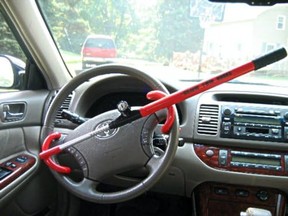
CAR ALARMS, EXTRA LOCKS
Even when you’re not at home, a visible and audible car alarm is a great deterrent to a would-be thief.
Also, consider using an anti-theft steering wheel lock when you park your car at home or in a public place. While a little inconvenient for drivers to put on and take off, they add time the criminals don’t want to spend.
Some vehicle owners opt for wheel locks instead.
LOCK THE OBD PORT
Securing the onboard diagnostic (OBD) port, which is typically below and to the left of your steering wheel, can block access to where thieves reprogram the vehicle’s key fob.
You can find these affordable solutions online.
Or consider installing an aftermarket car immobilizer, which is an electronic device that prevents the engine from starting without a specific key or code.
INSTALL A GPS SOLUTION
Alternatively, invest in an aftermarket global positioning system (GPS) tracker, as it may assist in recovery of the vehicle if it’s stolen. But always work with the authorities to retrieve a vehicle you may see on a map instead of you trying to retrieve it yourself, which could put you in danger unnecessarily.
At the very least, consider a Bluetooth tracker like an AirTag or Tile (from $35).
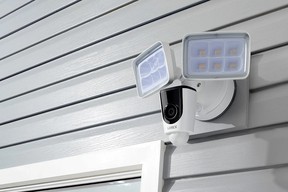
LIGHTS, CAMERA, ACTION!
Always try to park in a well-lit area, whether when you’re in a parking spot or on your driveway.
At home, ensure you’ve got outdoor security cameras – which are not expensive these days – that acts as a deterrent and archives suspicious activity should you need video evidence.
HIDE YOUR VALUABLES
Some criminals don’t want your vehicle, but rather, the contents within it.
Avoid leaving a laptop, briefcase, purse or pricy sunglasses in the front or back seat.
To avoid tempting a would-be thief, place valuables under the seat, in a glove compartment, or in the trunk – or bring them with you.
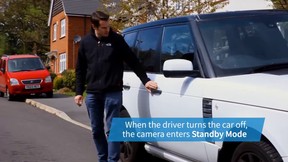
DASHCAMS CAN HELP
Many of today’s dashboard cameras (dashcams) have a “parking mode” (or “standby mode”) that begin recording video around (and sometimes inside) the vehicle when it senses motion or sound – and many can push a notification to your phone while you’re, say, inside a restaurant or shopping mall.
Some dashcams even have a two-way voice feature, allowing you to tell the crooks that the cops are on their way.
Some cars already have multiple cameras built in, to show all around the vehicle, which is convenient to have as well.
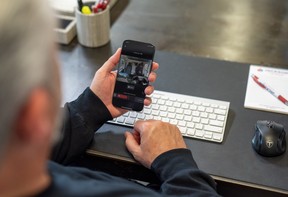
GATES, RETRACTABLE BOLLARDS
Homeowners with expensive vehicles might consider a gate in front of their driveway, with push-button entrance inside the vehicle.
Another option is retractable bollards, which are raised after you park on the driveway (or in the garage) to prevent someone from driving off with your vehicle.
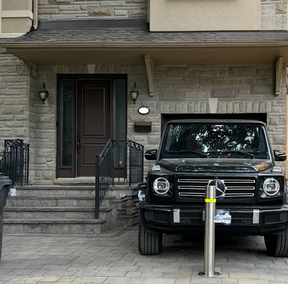
BONUS TIP
For ages, we’ve kept a vehicle’s registration and proof of insurance in the vehicle’s glove compartment in case you’re pulled over or if you get into a fender bender. But insurance companies and law enforcement officials are now advising against this practice.
A stolen vehicle with your personal info can lead to identity fraud. After all, criminals may not stop at stealing just the vehicle itself.
Plus, if your vehicle is stolen in a public place, the thieves now have your home address.
If you don’t want to keep these papers in your wallet or purse – and a digital copy stored on your smartphone – at least hide these documents in your vehicle.
On a related note, you may have programmed your exact home address into your vehicle’s mapping software, as part of its infotainment system, but a thief can simply tap “Home” and the navigation will take them straight to you. Instead, make your “Home” a nearby business, like a gas station.
– Marc Saltzman is the host of the Tech It Out podcast and author of 17 books, including Apple Watch For Dummies (Wiley)














Postmedia is committed to maintaining a lively but civil forum for discussion. Please keep comments relevant and respectful. Comments may take up to an hour to appear on the site. You will receive an email if there is a reply to your comment, an update to a thread you follow or if a user you follow comments. Visit our Community Guidelines for more information.